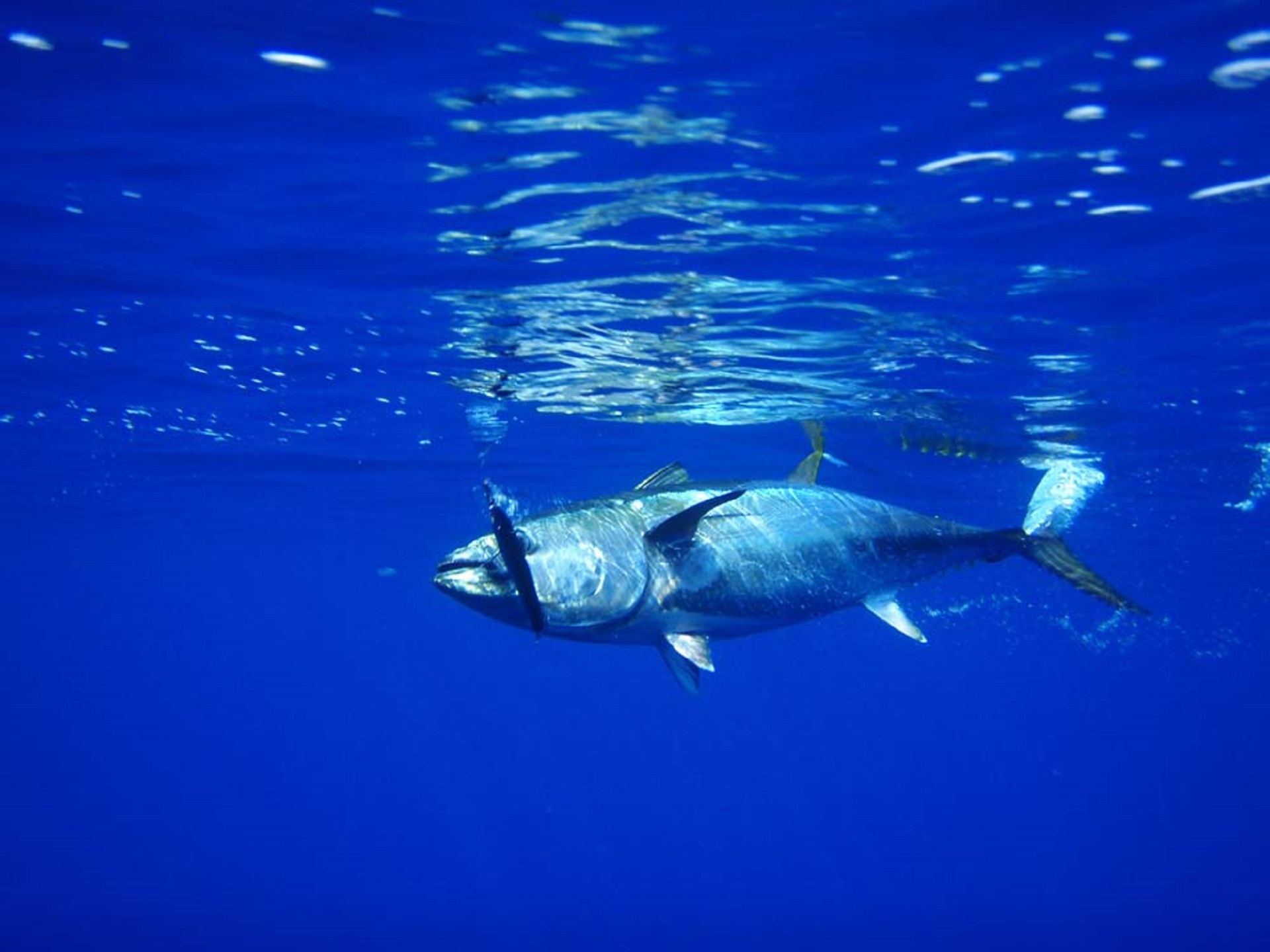About the distribution of biodiversity on our planet
Large open-water fish predators such as tunas or sharks hunt for prey more intensively in the temperate zone than near the equator. With this result, a study headed by Marius Roesti of the University of Bern is challenging a long-standing explanation for the distribution of biodiversity on our planet.
Since Charles Darwin, biologists have been using the so-called "biotic interactions" hypothesis to explain, at least in part, why the tropics around the equator are so species rich. The hypothesis focuses on the importance of interactions between species for biodiversity. The geneal idea is that species interactions increase towards the species-rich equator. Such interactions may include interactions such as between parasites and host, or between a predator and its prey. The intuitively appealing hypothesis is: The stronger the interactions between species, the faster evolutionary change, thus resulting in increased species diversity. Strong species interactions should further help maintain a high level of biodiversity. Testing this long-standing hypothesis has proven extremely difficult in the past, and the results from past studies aiming to test the "biotic interactions" hypothesis are mixed.
A new publication in Nature Communications now further challenges the general validity of the "biotic interactions" hypothesis. The study suggests that a specific but fundamental interaction between species – predation by large fish such as tunas or sharks – is stronger in the temperate zone than near the equator. According to the "biotic interactions" hypothesis, stronger interactions should be accompanied by a higher diversity of fish species – a pattern that is also not born out by the study. The study is headed by Dr. Marius Roesti, who began the research work at the University of British Columbia in Vancouver and is now working at the Institute of Ecology and Evolution at the University of Bern.
Analyzing more than 900 million predator attacks
To measure the interaction strength between large fish predators and small prey fish, the scientists analyzed four large data sets from pelagic (open ocean) longline fishing spanning all four major ocean basins (East and West Pacific, Atlantic, Indian Ocean). These data were used to infer how many predatory fish were caught per bait – a natural prey such as a mackerel or sardine. The researchers evaluated the catch of a fish predator as an attack by a predatory fish on its prey and hence, as an interaction between two species. "This investigation was only possible due to this extraordinary data set. The full data set spans the entire planet and records over 900 million catches of fish predators by longline fisheries over the past 55 years," comments Marius Roesti. The researchers then inferred where predatory fish bite most frequently and compared these results with the diversity of fish species.
Predatory fish attack most frequently in the temperate zone
The study found that predation by large fish is stronger at latitudes in the temperate zone than near the equator. "The latitudes with the relatively highest number of captured predators are in or near the temperate zone, and not near the equator. This result is generally true for all ocean basins and the entire period under investigation," says Roesti. Predation then decreased again towards the poles. Furthermore, the study shows that fish species richness is not highest where predation is strongest.
In a nutshell: Pelagic fish predation is not strongest near the equator, but in the temperate zone. In turn, fish species richness peaks at the equator. These results contradict the general idea of the "biotic interactions" hypothesis, at least for pealgic fish predation.
Information about the publication:Roesti, M. et. al. 31 March 2020. Pelagic fish predation is stronger at temperate latitudes than near the equator. Nature Communications. DOI: 10.1038/s41467-020-15335-4 |
2020/04/01



